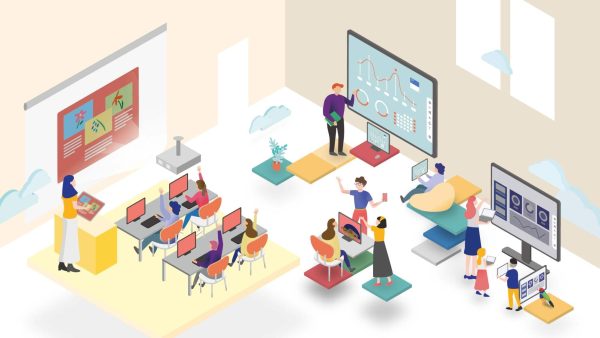The art of procrastination

Who is the most susceptible to procrastinating?
“Lower age, male sex, lack of a partnership, unemployment, the presence of depression, stress and fatigue were predictive of procrastination in a multivariate analysis, explaining 24% of variance,” was the main takeaway from a National Library of Medicine study. The NLM also says a reason young people procrastinate more often is due to the structure of schools. Educational environments are less organized than workplaces, leaving room for unhealthy habits.
Why do we procrastinate?
Procrastination is something we all do from time to time, but what’s the reason? On students, solvingprocrastionation.com explains that “in some cases, students suffer from various issues that interfere with or oppose their self-control and motivation, such as exhaustion and anxiety. When these issues are stronger than their self-control and motivation, they end up procrastinating, until they reach a point where the balance between these factors shifts in the students’ favor, or until it becomes too late.” These issues can include perfectionism, abstract goals, exhaustion, etc. A student with an essay that’s due in three weeks is more likely to procrastinate. This student may rationalize this by thinking “I still have plenty of time”.
What happens in the brain when we procrastinate?
An article on bustle.com by JR Thorpe about the neuroscience behind it. Procrastination occurs when the frontal cortex has a task. But the amygdala senses discomfort. and distorts the signals in your brain. The more you procrastinate, the more your brain grows accustomed to the process. It then solidifies neural pathways that make us default to pushing things off. These physical changes in the brain can be noticeable on a scan. “In chronic procrastinators the volume of the amygdala is larger than normal, indicating that it may have more power over decision-making, and that the amygdala is less connected to the dorsal anterior cingulate cortex, which helps regulate the amygdala’s reactions”.
When does progress turn into procrastination?
When you’re planning out a big project or doing research before diving into your essay, this is a good thing. But when this drags on too long, it becomes a form of procrastination. “Procrastination is not waiting and it is more than delaying. It is a decision to not act. It is very helpful and useful to gather information to make an informed decision, but when one simply continues to gather beyond the point of adequate resources, then they are being indecisive and the waiting is counterproductive.” said psychology professor Dr. Ferrari when interviewed by Audrey Hamilton.
Where does this bad habit lead?
Everyone knows it’s not good to wait until the last minute, but what’s the long term impact of procrastination? An article posted to lifehacks.org provides examples of how procrastination creates cycles. One example would be how this “tends to create limiting beliefs. These develop at an early age or even in our adult years and make you believe you’re less capable, and in turn, you become less and less capable of doing things and blow opportunities.” Repeated patterns of procrastinating reinforce negative thoughts about yourself and your work ethic. Soon enough, your actions will reflect that mindset and your performance will suffer.
Another effect of chronic procrastination is the chronic anxiety that can go with it. Procrastinators start acting when the pressure of an upcoming deadline is unavoidable. They also experience dread when they’re avoiding a task. There’s rarely ever relief from this panic or unease, as it sticks around throughout the process. It is common medical knowledge that stress has adverse health effects. Even the Mayo Clinic warns of the fatigue, sleep issues, and physical pain that stress can manifest as.
How do you stop or prevent this?
Also in bustle.com’s article, one Dr. Pychyl says that “eight weeks of mindfulness meditation actually shrinks the size of the amygdala. Mindfulness can shrink the amygdala volume and change the neural connections to the prefrontal cortex”. The more you fight the emotional response to stress, the easier it will become to get stuff done.
About the Contributor





